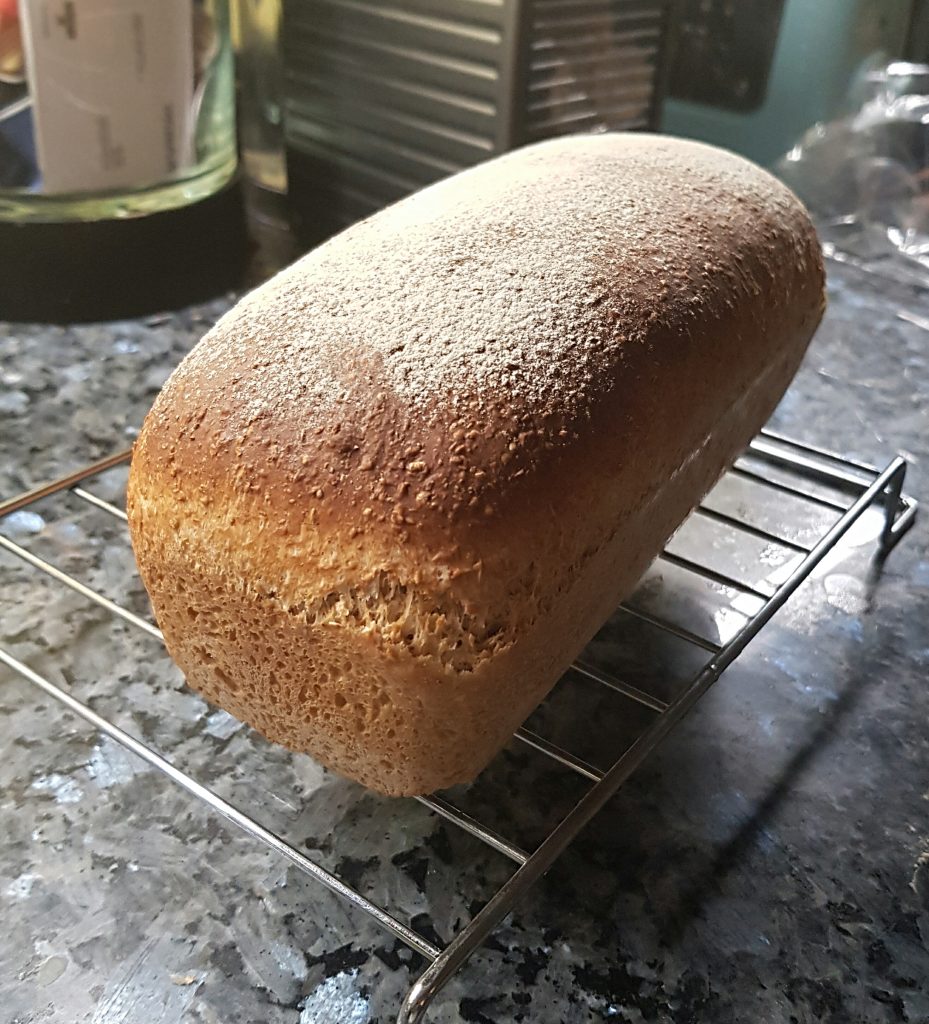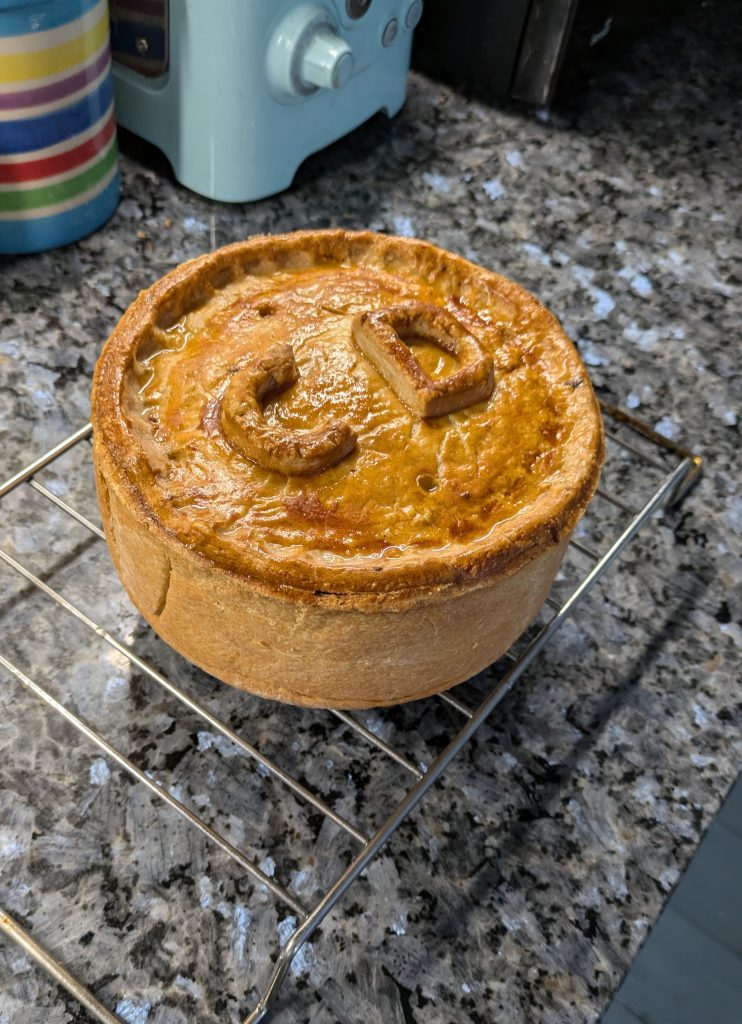Recipes
Easy Granary Loaf

Easy Granary Bread Recipe (450g Loaf)
This recipe yields a 450-gram loaf, which fits most standard loaf tins more comfortably than a 500-gram loaf.
Ingredients:
- 225g strong bread flour
- 225g Hovis Granary flour
- 10g sea salt (or about 4 pinches)
- 35-40 ml olive oil
- 1 sachet of dried yeast (or 25g fresh yeast)
- 250g water (you may need a little more if the dough is too stiff)
Instructions:
You can make this bread either by hand or using a food mixer fitted with a dough hook, depending on how much energy you have. Fresh yeast generally rises a bit faster, but if you start your bread in the morning, it will be ready to bake later in the day regardless.
- Prepare the ingredients: Place the bread flour, granary flour, salt, and olive oil in a large mixing bowl or the bowl of your food mixer.
- Activate the yeast: If using dried yeast, add it directly to the bowl with the other ingredients. If using fresh yeast, dissolve it in the water before adding to the mixture.
- Combine the ingredients: Slowly pour the water (or water-yeast mixture) into the bowl, mixing as you go, until the ingredients come together into a sticky dough.
- Knead the dough:
- By hand: Knead the dough by pushing it down with the heel of your hand, folding it over, and pressing down again. Repeat this process for about 10 minutes until the dough is no longer sticky and feels springy to the touch. The dough should try to bounce back when you press it lightly with your finger. If your worktop is not non-stick, lightly oil the surface to prevent sticking.
- With a food mixer: If you’re using a mixer, set it to a slow speed and let the dough hook do the work for about 5 minutes.
- First rise: Shape the dough into a smooth ball and place it in a lightly oiled bowl. Cover the bowl with cling film or a damp tea towel and let it rise at room temperature until it doubles in size. This may take 1 to 2 hours depending on the room’s warmth.
- Knock back the dough: Once the dough has doubled in size, remove it from the bowl and give it a gentle knead to knock out any excess air. Shape it back into a small ball.
- Shape the loaf: You can either place the dough into a greased loaf tin or shape it into a cob (round) loaf. If using a loaf tin, I recommend a silicone tin, such as the Lakeland silicon loaf tin, as it doesn’t require greasing. For a cob loaf, use a non-stick baking sheet.
- Second rise: Let the dough rise again until it has doubled in size. This second rise will be quicker than the first, so keep an eye on it. Allowing the loaf to rise fully ensures a light and airy texture.
- Preheat the oven: Set your oven to 220°C.
- Prepare the loaf for baking: Dust the top of the loaf with a little flour or make a few slashes with a sharp knife for a decorative touch.
- Bake: Place the loaf in the preheated oven and bake for about 30 minutes. The loaf should have a golden-brown crust and sound hollow when tapped on the bottom.
- Cool the loaf: Remove the bread from the oven and turn it out onto a cooling rack. Allow it to cool completely before slicing.
Tips for the Perfect Granary Loaf
- Dough consistency: If the dough feels too stiff, add a tiny bit more water, one teaspoon at a time, until the desired consistency is reached.
- Yeast variation: Fresh yeast typically provides a quicker rise than dried yeast, but both work well in this recipe.
- Storing the bread: To keep your bread fresh, store it in an airtight container at room temperature for up to 3 days.
Enjoy your delicious homemade granary bread with your favourite toppings or as a base for a hearty sandwich!
Andy’s Pork Pie

Andy’s Pork Pie
Family Sized Pork Pie – 1 hour preparation, plus 70 minutes cooking time
If you’re looking for a tried and tested classic British pork pie recipe, look no further. This delicious, family-sized pork pie features a rich filling, a perfectly baked pastry crust, and a savoury jelly that sets it all off.
The quantities in this recipe are for 160mm diameter by 60mm spring-form cake tin.
Ingredients for the Filling
If fresh herbs aren’t to hand dried herbs can be substituted.
- 300g pork mince (15-20% fat)
- 240g pork shoulder, finely chopped with any gristle removed, but fat retained
- 120g streaky bacon, diced
- 1.5 teaspoons of salt
- 30 grates of fresh nutmeg
- 2 teaspoons fresh sage, finely chopped
- 2 teaspoons fresh thyme, finely chopped
- 1 teaspoon white pepper
- 1/2 teaspoon cayenne pepper
Ingredients for the Pastry
This is easy – do not substitute with shop bought pastry!
- 150g lard, cut into cubes
- 75ml whole milk
- 75ml water
- 1/2 teaspoon salt
- 450g plain flour
Ingredients for the Jelly
You could use a chicken stock jelly mixed with some additional gelatine if you wish, but below is the traditional way.
- 2 sheets of leaf gelatine
- 300ml chicken stock
- 1 bay leaf
- 1/2 teaspoon crushed black pepper
- 1/2 teaspoon ground coriander seeds
Method for the Filling
- In a large bowl, combine all the filling ingredients until thoroughly mixed. Set aside while you prepare the pastry.
Method for the Pastry
Don’t be intimated about making this water crust pastry. It really is very easy and gives the pie that real pork pie taste.
- In a saucepan, gently heat the lard, milk, water, and salt until the lard has completely dissolved.
- Pour the warm liquid mixture into the plain flour and mix well to form a dough.
- Knead the dough for 2-3 minutes until smooth and pliable. Set aside one-quarter of the dough for the pastry lid.
- Line the baking tin with baking parchment.
- Roll out the remaining dough to a thickness of about 6-8mm.
- Use a quarter of the pastry to line the base of the pie and the remaining half to line the sides.
- Add the pork filling into the pastry case and cover with the reserved pastry lid. Crimp the edges to seal and pierce to top to allow any steam out.
- Decorate the top as you please using any left-over pastry and egg wash the top for a shiny surface.
Baking Instructions
- Preheat your oven to 180°C (fan) or 200°C (conventional).
- Place the pie in the oven and bake for 1 hour and 10 minutes, until the pastry is golden brown.
- Allow the pie to cool at room temperature for at least 30 minutes.
Method for the Jelly
- Soak the gelatine sheets in cold water for 5 minutes.
- In a separate pot, heat the chicken stock with the bay leaf, black pepper, and ground coriander seeds.
- Squeeze out excess water from the gelatine and stir it into the hot stock until fully dissolved.
- Strain the stock through muslin to remove any solids and let it cool slightly.
- Or ignore the above and cheat a little and use a stock jelly with some additional gelatine.
Finishing Touch
- Once the pie has cooled, make small holes, near the edges of the top crust to allow the jelly to find its way to the sides of the pie filling.
- Using a small funnel, carefully pour the jelly mixture into the pie through the holes until the pastry case is full.
- Place the pie in the refrigerator to set completely.
Storage and Serving Suggestions
This pork pie is best enjoyed cold and can be stored in the refrigerator for up to 5 days. Serve with a side of tangy pickle like piccalilli or an English mustard for a traditional touch.